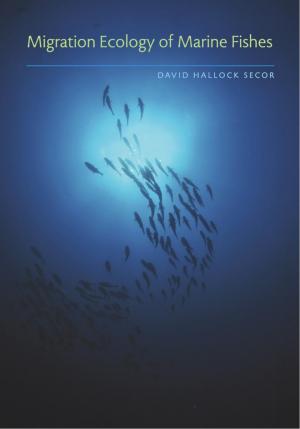SOLOMONS, MD (June 4, 2015)--"Imagine the clandestine lives of marine fishes,” begins “Migration Ecology of Marine Fishes,” a new book by Dr. David Secor, one of the most respected voices in marine fish migration studies. Their movements, social interactions, and favorite spots are all obscured beneath the surface. However, an explosion of technological advances in data gathering and analysis has allowed fisheries scientists to observe the secret lives of fish in a whole new way.
 A pioneer of digital-age discoveries on the migration ecology of coastal fishes, Secor explains in his book how the last four decades of digital‐age technologies have revealed the previously hidden migration behaviors of fish.
A pioneer of digital-age discoveries on the migration ecology of coastal fishes, Secor explains in his book how the last four decades of digital‐age technologies have revealed the previously hidden migration behaviors of fish.
“The digital age has given us millions of paths and turns and spins of behaviors,” says Secor, a professor at the University of Maryland Center for Environmental Science's Chesapeake Biological Laboratory. These include microchips that communicate with satellites to tell us where fish are going, space age chemistry that reveals where fish have been, and computer simulation to model how fish react to each other and the environment not dreamt of 30 years ago.
Emerging from this deluge of data is an appreciation of the individual fish. Members of the same populations may stay put, explore, move out of their home territory early or late, or change their minds all together as they respond to their marine environment. However, rather than a morass of individual behaviors, Secor shows that populations are collectively organized through a new concept of partial migration: the propensity of groups within populations to make different migration decisions.
“Migration Ecology of Marine Fishes,” published by Johns Hopkins University Press, is a follow up to legendary fisheries scientist Harden Jones’ classic “Fish Migration,” which presented the general concept of fish migration for the first time nearly 50 years ago.
 Secor’s research brings together the history of ideas on fish migration, as well as an analysis of the new technologies that have provided remarkable observations on movements of fish in the global oceans to address why fish go where they do, and why an understanding is critical to the management of ocean uses.
Secor’s research brings together the history of ideas on fish migration, as well as an analysis of the new technologies that have provided remarkable observations on movements of fish in the global oceans to address why fish go where they do, and why an understanding is critical to the management of ocean uses.
“We can’t wait around to find everything out in an environment that’s constantly changing,” says Secor. “But we can integrate these simulation approaches so we can ask ‘what if’ questions so fisheries managers can make risk-based decisions.”
Located where the Patuxent River meets the Chesapeake Bay, the Chesapeake Biological Laboratory is the oldest publicly supported marine laboratory on the East Coast. Founded in 1925, it has long been a national leader in fisheries, environmental chemistry and toxicology, and ecosystem science and restoration ecology with a focus on whole ecosystem management and restoration. From developing successful fisheries management plans and breaking new ground in understanding how chemicals move between the atmosphere, sediments, and water to renowned work on nutrient dynamics and the food web, the lab is developing new scientific approaches to solving environmental management problems that face our world.
UNIVERSITY OF MARYLAND CENTER FOR ENVIRONMENTAL SCIENCE
The University of Maryland Center for Environmental Science unleashes the power of science to transform the way society understands and manages the environment. By conducting cutting-edge research into today's most pressing environmental problems and training the next generation of environmental scientists, we are developing new ideas to help guide our state, nation, and world toward a more sustainable future. From the mountains to the sea, our five research centers include the Appalachian Laboratory in Frostburg, the Chesapeake Biological Laboratory in Solomons, the Horn Point Laboratory in Cambridge, the Institute of Marine and Environmental Technology in Baltimore, and the Maryland Sea Grant College in College Park. www.umces.edu
# # #

